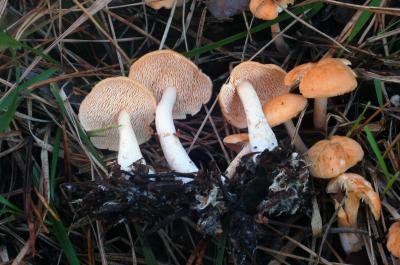[dropcap style=”font-size:100px; color:#992211;”]T[/dropcap]wo new mushroom species documented in the Iberian Peninsula
Attention foodies : Rare culinary experience now available as not one but two new mushroom species are discovered in Spain.
In collaboration with the Royal Botanic Gardens of Madrid and the Slovenian Forestry Institute, researchers in the Basque Country have documented two new mushroom species of Hydnum, commonly known as ox tongue mushrooms, as part of their study published in the ‘Mycologia’ journal. This genus is known because many of its fungi are edible.
Spanish researchers have headed the discovery of two mushroom species belonging to the Hydnum genus, a type of fungus commonly used in cooking.
“During our study we discovered two new species: Hydnum ovoideisporum and Hydnum vesterholtii, which belong to a genus commonly known as ‘ox tongue’. Although many of this species’ mushrooms are consumed in many parts of the world, paradoxically there have been few recent serious studies that attempt to clarify what species exist and the differences between them,” as explained to SINC by Ibai Olariaga Ibarguren, lead researcher of the study conducted from the University of the Basque Country.
According to the experts, differentiating this genus is a very complicated task since there is much resemblance between species and they have rather similar microscopic characteristics. “This is one of the reasons why many authors of studies have believed that there are few Hydnum species with different variables,” outlines the scientist.
Nonetheless, the scarcity of molecular studies carried out on these fungi indicates that their genetic diversity is very high. Olariaga himself has been performing a review of this genus in the Iberian Peninsula for years. One day he discovered that there were two new mushroom species that were distinguishable from the rest because of their specific ecology and the fact that they had ovoid basidiospores, instead of the blastospores in the majority of species.
“The molecular study that our work provides confirmed that the species detected at the time using classical morphology-based taxonomy belonged to two genetically different lineages,” highlights the researcher.
Recognising collected new mushroom species
Since they cannot be cultivated, species belonging to the Hydnum genus are collected from natural ecosystems in large quantities. They are not poisonous, which is one of the reasons why great emphasis has not been placed on differentiating them.
Nonetheless, very little is known about how widespread they are, their ecology and whether those being collected are an endangered species or under threat of extinction or, on the contrary, a very common species.
“This type of study allows us to delve deeper into these aspects and gain precise information that can be interesting from an applied point of view, since it is necessary to know for example if one or a few species produce certain secondary metabolites or molecules of industrial interest,” explains Olariaga.
It is probable that the collectors have consumed these two new species since Hydnum mushrooms are phylogenetically related to Cantharellus (chanterelles) and Clavulina (coral fungi) and they all have edible species. “It would be highly unlikely that these two species documented were not actually edible.”
Source: Ibai Olariaga, Tine Grebenc, Isabel Salcedo, María P. Martín. “Two new species of Hydnum with ovoid basidiospores: H. ovoideisporum and H. Vesterholtii” Mycologia, 104(6):1443-55, December 2012. doi:10.3852/11-378. Eurekalert. Images by UPV/EHU

The aim of art is to represent not the outward appearance of things, but their inward significance. – Aristotle






















